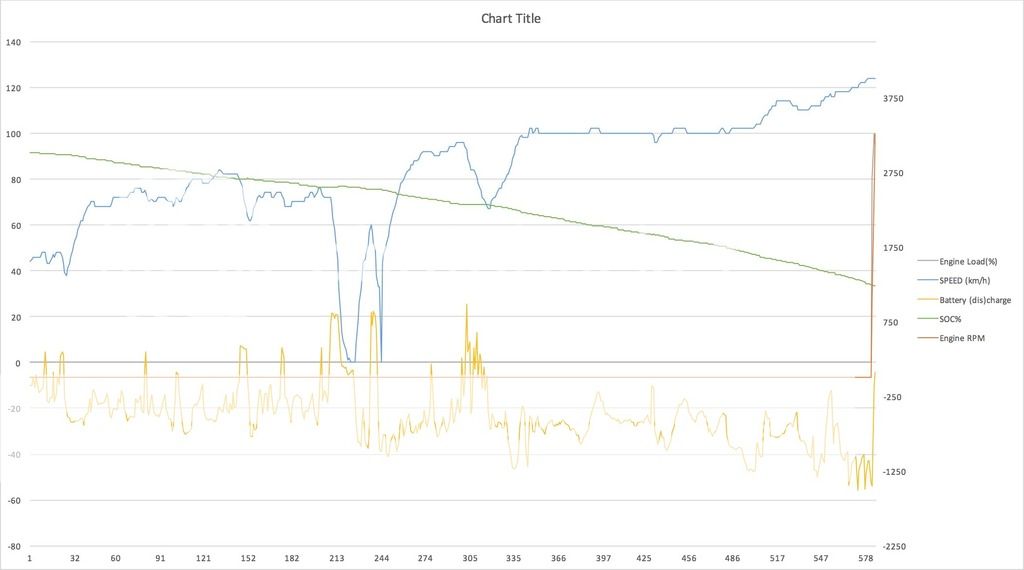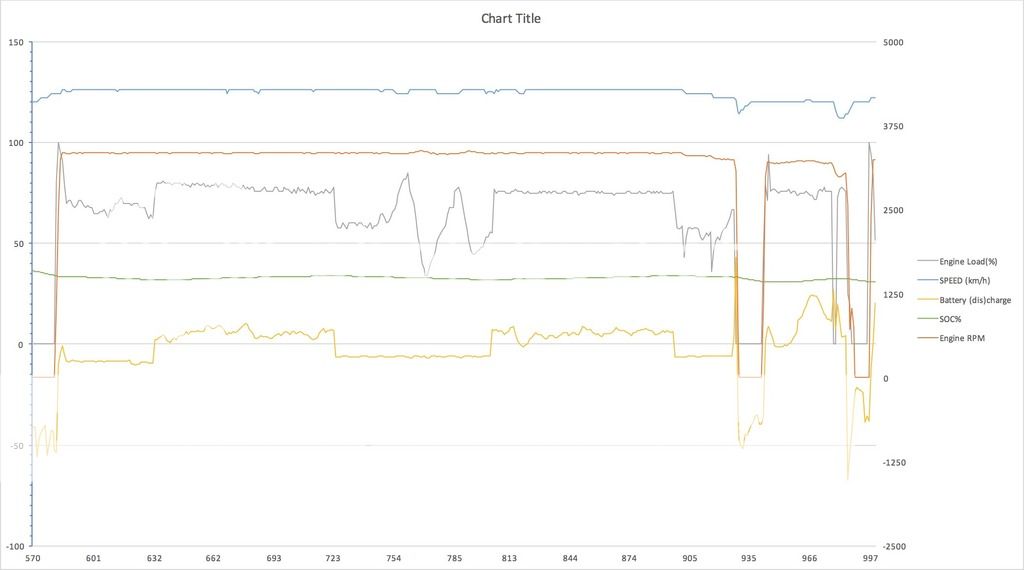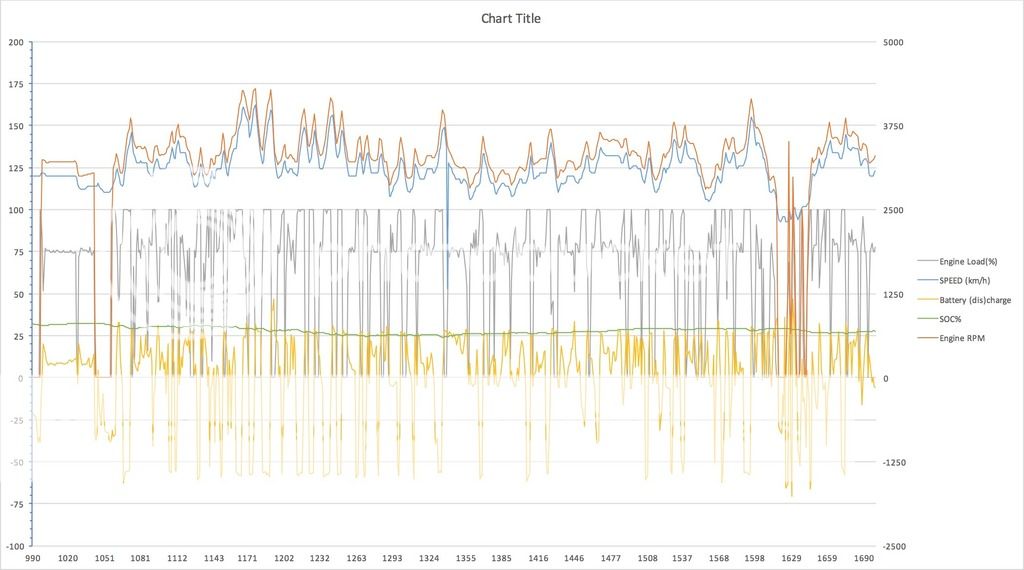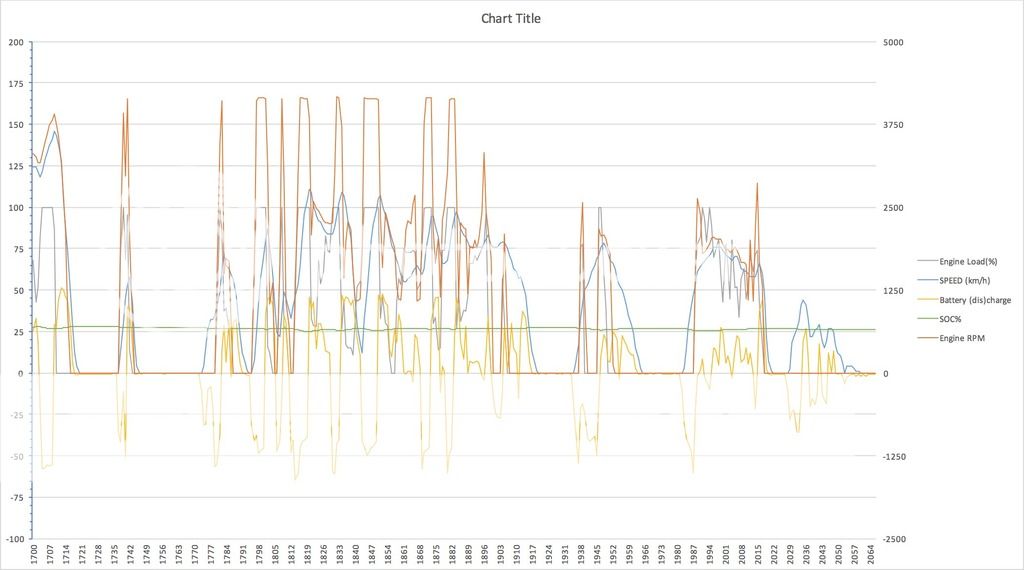maby said:
I'm glad it's not only me! Several here such as jaapv are insistent that the SOC has no impact on driveability, but it always seems a bit underpowered to me when running with a flat battery. I suspect it is a question of how hard you drive it - I like the kick up the backside that goes with serial hybrid on a full battery!
And me too. To bad Jaap hasn't commented on my opening post (yet). I was pretty much in his camp (or he in mine) until this morning. We both believed the drivability as well as performance of the car was not impacted by SOC (until you hit 20% SOC).
Now I still believe performance is not impacted (until you hit same 20% SOC) but I think that (perceived) drivability at low speeds is impacted by having the engine run, regardless of whether this is a result of Charge or Save mode or because of low SOC.
Typical scenario to explain:
While towing the caravan, I firmly pull away from the first roundabout in EV mode. This is quiet and seems totally effortless. Big smiles on all faces in the car. At the next roundabout, I pull out in Charge mode. This results in high revving of the engine. And a nasty smell as a bonus. Even with significant SOC. No more smiles on the faces in the car. Except for mine. So, from a comfort perspective, it would be best to disengage Charge mode. But from a "I am towing and therefor I want to have as much SOC as possible" perspective, it is much better to keep Charge mode engaged. As most likely, the battery is being recharged, even while pulling out of the roundabout. This is why there was still a smile on my face. As I was the driver

And yes, because of the high revving in Charge mode and the hard work the engine is delivering, the car may seem underpowered. But don't forget, the same battery power that was available when pulling away from the first roundabout is still there as a reserve just in case the engine couldn't cope.




